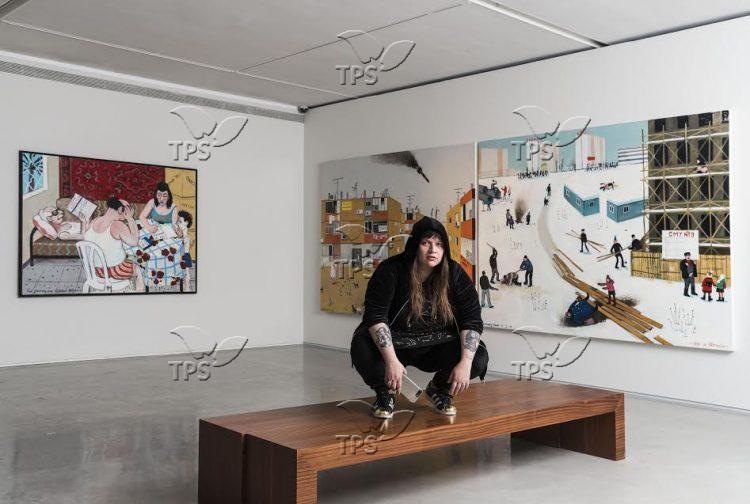Russian-Israeli Painter Captures Immigrant Experience in Jerusalem Exhibition
Jerusalem, 13 January, 2018 (TPS-IL) -- Walking through the six rooms of Zoya Cherkassky-Nnadi’s new exhibition Pravda at the Israel Museum, the provocative painter brings to life many of the difficulties the million Russian immigrants who arrived in Israel following the collapse of the Soviet Union experienced.
The 50 works Cherkassky-Nnadi showcases explore the collective memory of the Russian immigrant generation. Although her oil-on-canvas works are very colorful and naive style, the images describe traumatic situations the Russian immigrants had to go through when they first arrived in Israel
“In Russia, we had a very strong Jewish identity, based on ethnicity. But when we got here, the Jewish identity was suddenly based on religion, so many Russian Jews were not considered as such. My father is an old Jewish Leninist, but my mother is only half-Jewish, and from the “wrong” side, so I am not considered Jewish here in Israel, although all of my school papers from Kiev said ‘Jew’,” Cherkassky told Tazpit Press Service (TPS) Thursday during a pre-opening press tour of the exhibition at the Museum.
[Editor’s note: Jewish law, and thus Israeli civil law, grants Jewish status to individuals born to Jewish mothers. Technically, it is possible to convert to Judaism, but the chief rabbinate only recognizes conversions performed by certain Orthodox rabbis.]
Cherkassky moved to Israel from Kiev in 1991 at the age of 14, just two weeks before the U.S.S.R collapsed. Today, she lives in Ramat Gan with her Nigerian-born husband and their baby and is considered a leading Israeli artist and a prominent member of the immigration wave that flooded Israel from eastern Europe during the 1990s.
Most of her paintings like Fu–ing Hebrew, the Circumcision of Uncle Yasha, Rabbis’s Deliquium describe the problematic relationship between religion and state here.
“I began the process of conversion a few years after I arrived in Israel , but when the rabbi told me that Jesus was not the son of God but rather the son of a Roman soldier, I understood the conversion was not for me,” she recalls, laughing. “Back in the ‘90s the Israelis didn’t understand us at all. We grew up with a very strong secular Jewish identity, and here they thought we were completely Christian.”
According to Prof. Larissa Remennick, a Bar-Ilan University sociologist who focuses on Russian Jews identity and integration into Israeli society, Cherkassky-Nnadi is part of “Generation 1.5” – people who fall in between the immigrant generation and the native-born and are now active in civil society, trying to change the perception of the Russian speaking community.
“Zoya successfully represents the internalization of the suffering and the difficulties we went through during the 1990s,” Remennick said. “Her success is surprising because it means that our problems have captured public attention.”
“Pravda” (Russian for “truth,” a reference to the name of the Communist Party’s official newspaper) is curated by Dr. Amitai Mendelsohn and will run until October.


